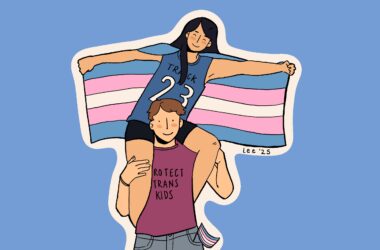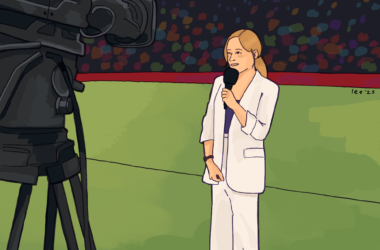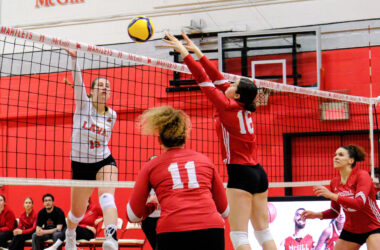For
If someone told you that police forces should cease to exist because in a few occasions, they have arrested the wrong person, would you join a picket line in front of a police station? No, you wouldn’t, simply because you know that the police are designed to punish offences despite the small drawbacks that can occur in the process.
The same logic can be applied to fighting in hockey. The first and foremost reason that fighting came to exist in the game of professional hockey, according to Ross Bernstein in his book The Code: the Unwritten Rules of Fighting and Retaliation in the NHL, was to protect teams’ key players. Over the years, teams have employed enforcers to protect their star players from the Matt Cookes to the Tie Domis of the game. The threat of having to fight Dave Semenko kept Wayne Gretzky safe, opening up the game and allowing him to play unfettered by fear of cheap shots. Fighting in hockey is not meant to be brutal and unwarranted, but is instead synonymous with protection and solidarity.
So, if fighting is removed from the game, how are players meant to dissuade cheap shot artists from filling their star players’ heads with flying elbows? Rob Ray, a former NHL enforcer, said it would be “a big mistake” to outlaw fighting. “You need to have that fear: If I hit someone wrong, someone’s going to come after me,” he said. “Without it, you’d have far more head shots and hits from behind.” Ray isn’t the only player who believes it either, as many players, including Gretzky, have lauded the role of the enforcer on their teams.
Yet in an era when head injuries are of primary concern for both fans and players, how does fighting stack up? The main argument against fighting is that it’s a leading cause of concussions in the NHL. Well fear not, my fisticuff-enjoying friends, because last March, the league released the results of a two-year statistical study of NHL concussions. According to the study, 44 per cent of the concussions incurred during the 2010-2011 season resulted from legal hits, 26 per cent from accidental hits, 17 per cent from illegal hits and eight per cent from fighting, with the cause of the remaining five per cent undetermined (which is probably legal speak for “Matt Cooke”). So, if you want to ban fighting because of head injuries, you’re going to have to ban legal hits and accidental hits from the game first, which is pointless.
Fighting should remain a part of the NHL.
– Christopher Nardi
Against
Fighting is a controversial subject in hockey. Some see it as part of the game and believe a fight can inspire a team, but what fighting takes away from hockey seems to have a larger impact than the occasional joys it might bring.
Hockey is about using skill, technique, strategy, and determination to rise above the other team. Without fighting, would outcomes be significantly affected? Unlikely. Undoubtedly there is a difference between men’s and women’s hockey. Women’s games lack a physical aspect, but they are still aggressive and are more focused on the technical aspects of the game—strategy and skill. This is not to say that men’s hockey games have less skill, but for some men, fighting can become a distraction that can deter from the enjoyment of the game. Roster spots that could go to skill players are reserved for goons who can barely skate.
In recent years the NHL has made major strides in cracking down on illegal hits. In particular, this season, Brendan Shanahan has made it clear that the league no longer tolerates illegal hits by doling out countless “Shanabans.” Supporters of fighting argue that enforcers protect star players, but in reality, the rules exist to punish offenders and these players take up roster spots that could go to skill players.
In addition, there are major injury consequences of fighting; players who fight run the risk of getting hurt. Those coaches who send their enforcers out to fight are complicit in these injuries.
This issue cannot be discussed without mentioning the events of this past year. Wade Belak, Rick Rypien, and Derek Boogaard all passed away, leading many to link fighting and the enforcer role with depression and substance abuse. As sad as these cases are, they are prime examples of what can happen to someone who assumes the enforcer role on a team. Not only does this lead to tragic outcomes for the individual and their families, but the morale of hockey also suffers. Without fighting, it’s possible these tragedies may have never occurred.
Fighting appeals to the commercial aspect of hockey. Some fans may argue that the game is more exciting if they can expect certain players to start fighting. This has a greater impact off the ice, as it will make more people watch the game but for reasons not directly related to the actual game—the wrong reasons. If you’re looking for a fight, watch the UFC. Fans should understand there is more to hockey than just fighting.
For the benefit of the game, the NHL should ban fighting.
–Rebecca Babcock
Winner: For
Fighting creates excitement for many fans and generates needed revenue for the league. It may seem barbaric and lead to injuries, but the stats show that fighting poses a lesser risk to players’ health than even regular hitting. Stars like Sidney Crosby are less likely to be targeted if the goons that injure them fear retaliation from enforcers. Until illegal hits are completely eliminated, fighting must remain a part of NHL hockey.







